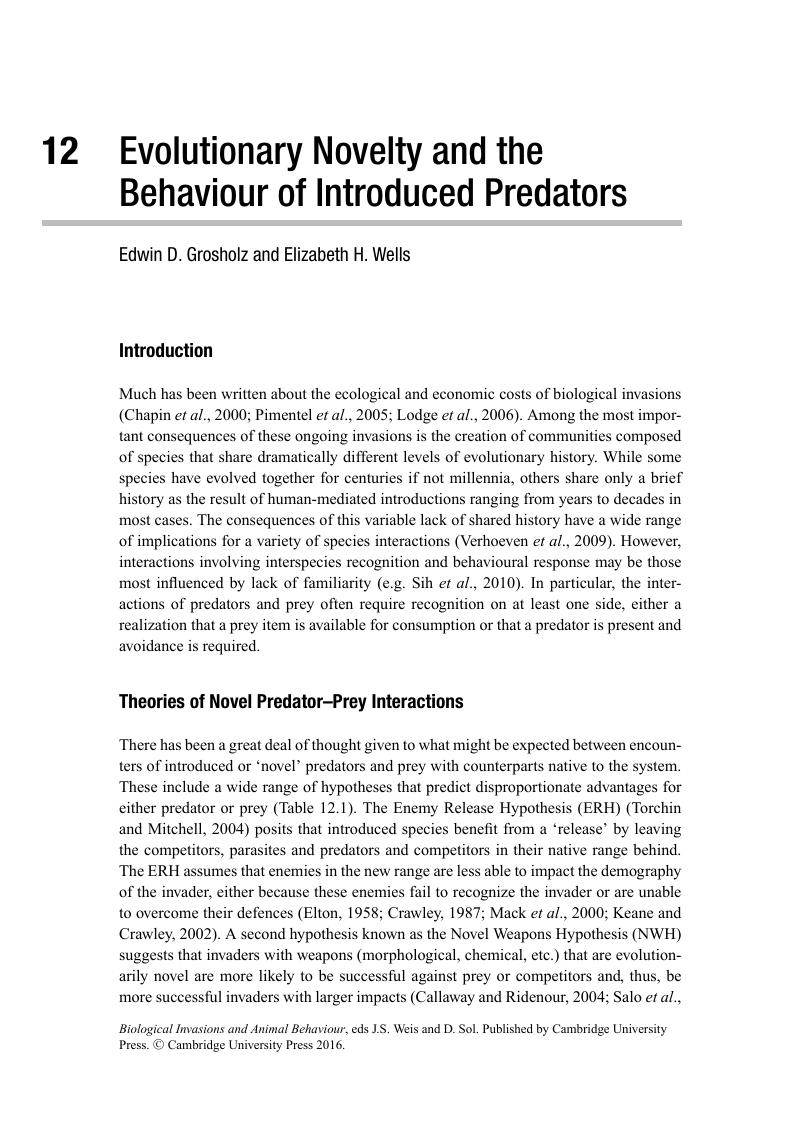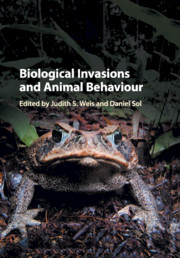Book contents
- Biological Invasions and Animal Behaviour
- Biological Invasions and Animal Behaviour
- Copyright page
- Contents
- Preface
- Contributors
- 1 Introduction
- Part I Behaviour and the Invasion Process
- Part II Behavioural Interactions Between Invaders and Native Species
- 8 Invasive Plants as Novel Food Resources, the Pollinators’ Perspective
- 9 In the Light of Introduction: Importance of Introduced Populations for the Study of Brood Parasite–Host Coevolution
- 10 Flight Behaviour of an Introduced Parasite Affects its Galápagos Island Hosts: Philornis downsi and Darwin's Finches
- 11 Eat or be Eaten: Invasion and Predation in Aquatic Ecosystems
- 12 Evolutionary Novelty and the Behaviour of Introduced Predators
- Part III Case Studies
- Index
- References
12 - Evolutionary Novelty and the Behaviour of Introduced Predators
from Part II - Behavioural Interactions Between Invaders and Native Species
Published online by Cambridge University Press: 27 October 2016
- Biological Invasions and Animal Behaviour
- Biological Invasions and Animal Behaviour
- Copyright page
- Contents
- Preface
- Contributors
- 1 Introduction
- Part I Behaviour and the Invasion Process
- Part II Behavioural Interactions Between Invaders and Native Species
- 8 Invasive Plants as Novel Food Resources, the Pollinators’ Perspective
- 9 In the Light of Introduction: Importance of Introduced Populations for the Study of Brood Parasite–Host Coevolution
- 10 Flight Behaviour of an Introduced Parasite Affects its Galápagos Island Hosts: Philornis downsi and Darwin's Finches
- 11 Eat or be Eaten: Invasion and Predation in Aquatic Ecosystems
- 12 Evolutionary Novelty and the Behaviour of Introduced Predators
- Part III Case Studies
- Index
- References
Summary

- Type
- Chapter
- Information
- Biological Invasions and Animal Behaviour , pp. 199 - 218Publisher: Cambridge University PressPrint publication year: 2016
References
- 2
- Cited by

